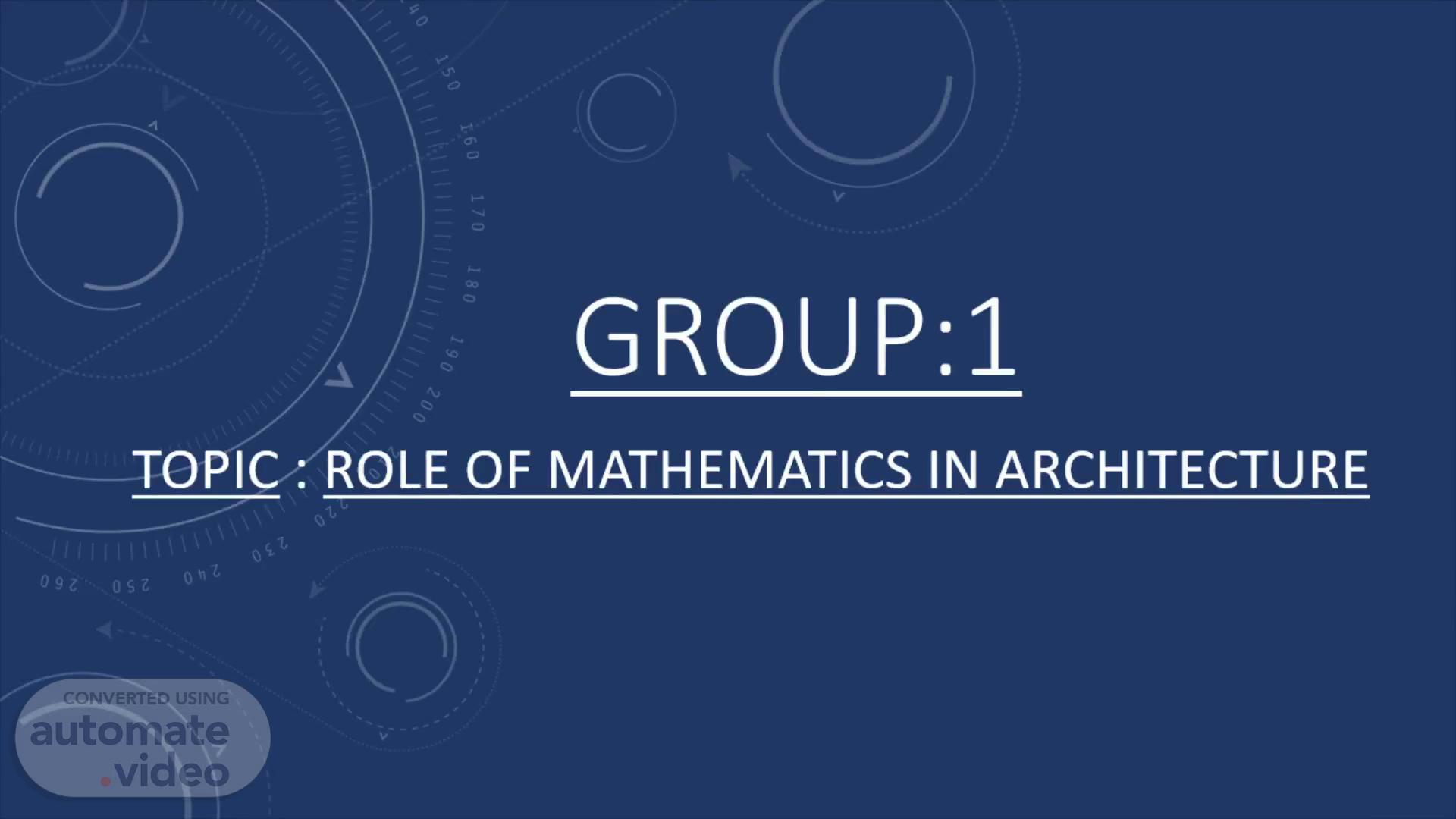Scene 1 (0s)
GROUP:1. Topic : Role of Mathematics in Architecture.
Scene 2 (7s)
ARCHITECTURE :. It is both the process and the product of planning, designing, and constructing buildings or other structures. Architectural works, in the material form of buildings, are often perceived as cultural symbols and as works of art. Historical civilizations are often identified with their surviving architectural achievements. The practice, which began in the prehistoric era, has been used as a way of expressing culture for civilizations on all seven continents. For this reason, architecture is considered to be a form of art..
Scene 3 (31s)
Role of mathematics in architecture :. Geometry, algebra, and trigonometry all play a crucial role in architectural design. Architects apply these math forms to plan their blueprints or initial sketch designs. They also calculate the probability of issues the construction team could run into as they bring the design vision to life in three dimensions..
Scene 4 (54s)
Taj mahal :. Reflection symmetries characterize the pattern of paving stones surrounding the Taj Mahal. Farther away, the tiling pattern consists of four-pointed stars and elongated hexagons above. Even the drainage holes in some of the stones have a striking hexagonal pattern. The rectangles that served as the basic outline for the exterior of the building were all in the Golden proportion . The tomb is a centerpiece of 17 hectare (42-acre) complex, which includes a mosque and a guest house and is set in formal gardens bounded on three sides by a crenellated wall ..
Scene 5 (1m 19s)
The Tomb , the central focus of the entire complex of the Taj Mahal. It is a large , white marble structure standing on a square plinth and consists of a symmetrical building with an iwan (an arch-shaped doorway) topped by a large dome and finial. Like most Mughal tombs , the basic elements are Persian in origin..
Scene 6 (1m 43s)
GOL GUMBAZ :. The structure is composed of a cube, 48 m (156 ft) on each side, capped by a roof 44 m (144 ft) in external diameter. Eight intersecting arches created by two rotated squares that create interlocking pendentives support the dome. At each of the four corners of the cube, is a dome-shaped octagonal tower with a staircase inside . The name is based on "Gol Gumbadh " derived from "Gola Gummata " meaning "circular dome"..
Scene 7 (2m 4s)
An interesting feature of Gol Gumbaz is that a whispering gallery runs around the dome’s inner periphery. Any sound made here gets echoed at least seven times or more. When you are inside the whispering gallery, you can hear even the softest of sounds from the other side of the monument. . This phenomenon is attributed to the impressive acoustics of the structure..
Scene 8 (2m 26s)
SANCHI STUPA :. The first and most fundamental of Buddhist architectural monuments, the Buddhist stupa (aka dagoba, chorten, pagoda) serves as a marker for a sacred space, a symbolic representation of the Buddha’s burial mound. A hemispherical mound called Anda. The domed shape Anda with green highlights portrays the mound of dirt that was used to cover Lord Buddha's remains..
Scene 9 (2m 44s)
Its nucleus was a simple hemispherical brick structure built over the relics of the Buddha. A square railing called is Harmika. A central pillar supporting a triple umbrella form called Chattra ..
Scene 10 (2m 59s)
OTHER SIGNIFICANT HISTORICAL PLACES.
Scene 11 (3m 5s)
CREDITS :. 1. Atul Kumar Mishra ( Leader ) 2. Shivansh Mishra ( Vice-Leader) 3. Akshat Singh 4. Aditya Sharma 5. Mannat Singh Kalra 6. Ritesh Chauhan 7. Rishabh Walia 8. Shivam Kumar 9. Kushagra Gautam 10. Saloni Parcha.
Scene 12 (3m 20s)
THANK YOU.
